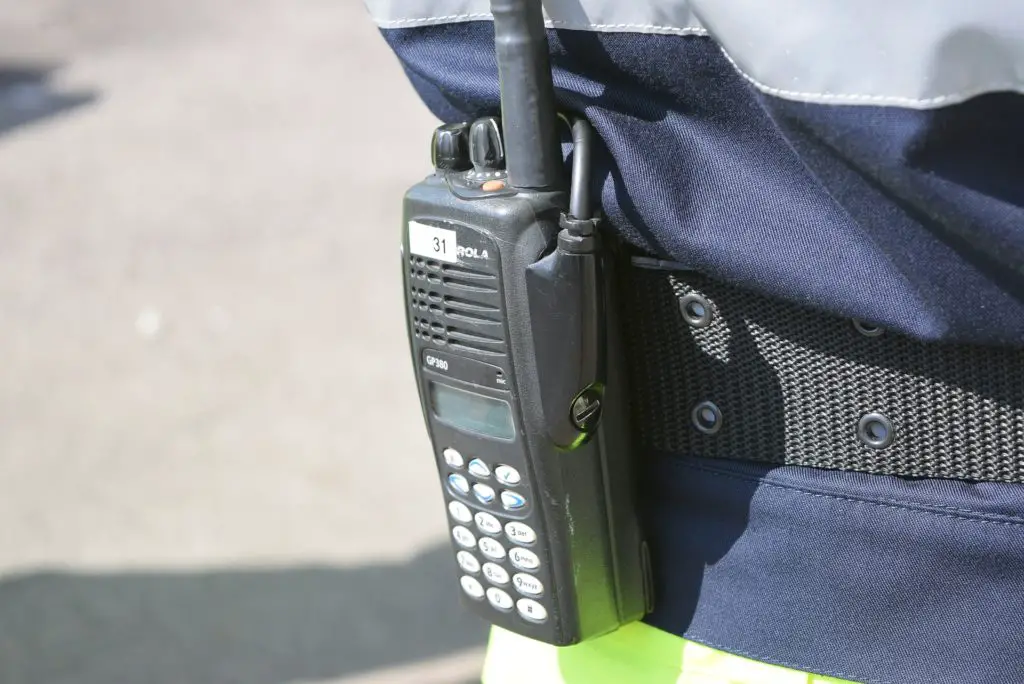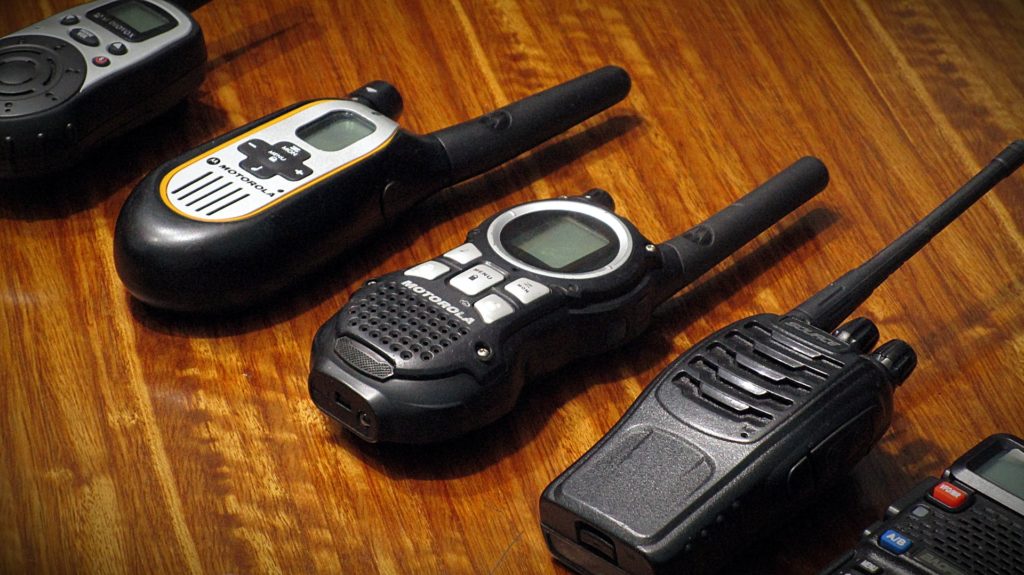The technology of cell phones advances at an astounding rate. Despite their fancy technology, cell phones are just fancy radios, and they have a very weak point: they are completely useless without a network of cellular towers nearby.
Walkie-talkies, however? In places where cell phones are not appropriate, old-fashioned radios provide short-range wireless communications.

Walkie-talkies, also known as walkie-talkies or walkies, are small, inexpensive, hand-held radios that can be used almost anywhere. These devices resemble cordless phones, as they are equipped with a microphone, speaker, and antenna.
A walkie-talkie, on the other hand, features a speaker and microphone that are placed nearby, with the speaker being much louder, allowing anyone within hearing distance to follow the conversation.
The walkie-talkies are battery-operated wireless transceivers. Therefore, they have the capability of sending and receiving radio messages. Even though they have a half-duplex channel, only one walkie-talkie is capable of transmitting a signal at a time, although many radio receivers can receive the same signal.
It is important to note that unlike your telephone, from which both parties may interrupt or contribute to the conversation in an open-ended way, walkie-talkies utilize a push-to-talk system (PTT) — you must press a button to speak, and you must release the button to hear the other unit speak.
The ease of use of walkie-talkies is because they do not require you to dial a number each time you wish to transmit. Most importantly, there is no reliance on erratic mobile signals.

Even when cellular networks fail during a natural disaster or power outage, the handsets communicate directly with each other. A short-range communication method is designed primarily for short-distance communication when multiple people are within a few miles of one another.
Companies use walkie-talkies for effective communication within and around their indoor and outdoor structures. Many outdoor enthusiasts carry walkie-talkies on hikes or hunting trips outside the phone network range, where cell coverage is nonexistent.
It is even possible to buy a baby monitor that has one-way walkie-talkie technology so that you can monitor Junior to see if he is asleep peacefully or is trying to escape.
What is a walkie-talkie?
Walkie-talkies are essentially cell phones and radios combined. The best models will be able to transmit and receive radio signals over distances up to 40 miles.
Someone holding a radio a few meters or even blocks away will hear what you say into a microphone. In the days before fancy smartphones and Android devices we know and love today, you could walk and talk at the same time.
It is one of the oldest forms of wireless technology still being used today. A walkie-talkie is an old-style device that can only be used within a relatively short range. In some cases, these devices are quite bulky, lightweight, and come with a microphone, a speaker, and an antenna on top.
Using a walkie-talkie doesn’t offer a great amount of privacy, however, since anyone can hear what you’re saying and what the person on the other end is saying.

A walkie-talkie is a portable communication device that transmits sounds and can be picked up by other people on another level of the mall. When you’re in a shopping mall, you may hear the crackle of a security guard’s device.
Moreover, if someone has information about what frequency you operate on, they can also receive messages and listen in on a conversation.
How Do walkie Talkies Works?
To begin with, walkie-talkies must make sure they are using the same frequency band. The microphone/loudspeaker in either of their handsets is configured as a loudspeaker since they are designed to transmit.
In cases when there is no one speaking, the system is likely to produce a static echo. When someone wants to talk, they press the button that turns their loudspeaker into a microphone, which eliminates static noise.
They speak into radio waves which are translated by the translator and transmitted via a pre-arranged channel. Radio waves are electromagnetic waves and so travel at the speed of light (186,000 mph).
They are picked up by other handsets immediately and turned into vibrations and electrical currents by the loudspeaker so the speaker can convey the voice. A battery-powered walkie-talkie is made to transmit and receive messages and to operate on a specific frequency.
You will hear a hissing noise from the device when it is in receiving mode when the user does not speak and the device is not tuned into a station.
Speaking requires pushing a button, and hearing the response requires releasing the button. Depending on the terrain, you may be able to communicate over long distances for both parties, provided they have the same frequency band.
The number of walkie-talkie users that can chat simultaneously is unlimited, however, everyone will use the same frequency band since only one person is allowed to speak at any time.
The listener says ‘done’ to the speaker when they have finished talking and releases the push-to-talk button when the speaker has finished speaking.
Two-way radios, such as walkie-talkies, can both transmit and receive data. Both tasks are performed on the same channel, so only one individual can speak at a time.

Today, many two-way radio systems allow multichannel usage to eliminate radio interference from other users. This can be achieved with a radio transmitter that can produce waves at different frequencies.
Walkie-Talkies Are Used By Who?
There are still many organizations and industries that use walkie-talkies for instantaneous and group communication.
Emergency care, security, the military, and transportation are included in this category. Many other industries use them as well, including construction, manufacturing, and hospitals.
Families also appreciate their hardiness and ease of use, making them very popular. When children are on a camping trip, for instance, they’re perfect for parents to watch over them.
What is The purpose of Walkie-Talkies?
When you need to communicate in places without a smartphone or GPS signal, walkie-talkies always come out on top because they don’t play music, send an email, access social media, or take pictures.

The reason for this is that they operate on one wireless frequency, so even if you find yourself off the beaten path, you will not be disadvantaged. A speaker and microphone are included in these small, easy-to-use radios.
Walkie-talkies are comprised of the following components
Modern walkie-talkies are constructed of the same components. A microphone/speaker, antenna, LCD, function buttons, battery, and circuitry work together to turn your voice into radio signals.
In a typical operation, a cone of paper or plastic and a wire coil is used, along with a magnet. Simple models are usually equipped with a combination speaker and microphone, but more advanced models may come with separate components.
Transceiver radio
All inner hardware units can be connected internally through this transceiver circuit. As well as generating radio frequencies for communication, it is also responsible for signal reception and transmission.

The main parts of this unit are the radiofrequency generator and the receiver. This unit is responsible for modulating your voice at the high carrier frequency and transmitting it. A second part involves demodulating a modulated signal, which is then translated into audio or speech. The frequency range should be consistent for transmission and reception.
Displays with LCDs
In this case, the LCD indicates radio status, text messages, and menu items, such as frequency channel number and remaining battery level. This feature is available in more advanced models only. LCDs are not available on all walkie-talkies.
Antenna
Most of the antennas used on walkie-talkies are made with sturdy metal and are protected with extra-durabThere are 3-inch and 6-inch stubby models available. stubby models Antennas are attached to all models.
The antennas are connected with coaxial RF connectors and with a semi-precision SMA antenna (Subminiature Version A). The antennas are responsible for your wireless devices’ clear signal while they receive radio waves and transform them into electrical signals. You can also transmit your signal using the antennas.
The microphone
You speak into a microphone, and an electrical signal is converted into your voice. However, this signal is weak in the beginning. This audio signal is amplified by an amplifier before being sent to a transceiver circuit.
In most walkie-talkies, the microphone automatically activates when the PTT (Push To Talk) button is pressed. As a precaution against loss of voice quality, every manufacturer of walkie-talkies suggests that the microphone be placed one to two inches from your mouth.
Speaker
Successful reception of the radio signal will result in the demodulating of the signal by the transceiver circuit and transmitting the demodulated signal to the audio amplifier. The audio amplifier amplifies and sends this demodulated signal to the speaker, where it is converted into an audio signal by the speaker.
PTT( Push to Talk) Button
The PTT button on the side of the radio has two main functions: when you press and hold down to initiate and call talk: release the PTT button to listen. by pressing PTT we activate the microphone and transmit the audio signal and when releasing this button speaker gets activated and we can receive the audio signal.
Conclusion
Walking-talkies provide instant connectivity and are budget-friendly. Groups often use them to communicate. Emergency assistance is provided at all times. Most of the time, the interaction is also clear.
For your first walkie-talkie purchase, we have also provided a dedicated buying guide.
Based on popularity, demand, and specifications, BestViewsReviews ranks and reviews the best long-range walkie-talkies and two-way radios.
